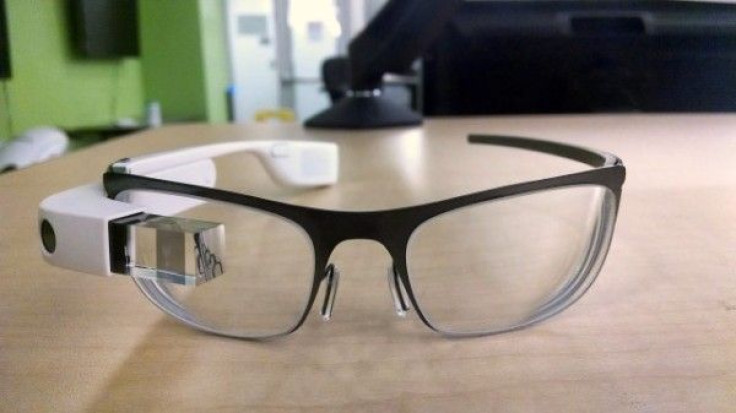Prescription Google Glasses Available Later This Month, Feature Specially Designed Lens For Heads-Up Display

Going on statistics alone, it may be more accurate to classify the 75 percent of Americans who wear corrective lenses as the majority, and the 25 percent that goes face-naked as super-sighted. Technology, at least, seems to be keeping pace with the four-eyed folk, as a number of optics manufacturers have entered the race to become the first company to release newly designed prescription lenses for Google Glasses to the public.
Since October, Google has been toying with prescription-based versions of their retro-futuristic specs, which feature the trademark heads-up display (HUD) and Cyclops-like frames. Developers first designed prototypes with fixed lenses, which come hardwired into the actual body of the glasses. Now companies like Rochester Optical and Longe Optical hope to roll out customizable, detachable versions that allow the glasses to stand on their own rather than make a hard change into, say, prescription bifocals.
One of the companies hoping to make a splash into the prescription market is Longe Optical, who first announced their development plans in mid-December. Though the company hasn’t announced when they plan on making the product available to consumers, they’ve led on about what features the lenses will carry. Most popular among them is the company’s “ClearVu Digital Lenses,” which Longe Optical claims makes colors more vivid and the wearer’s field of view wider.
"When we saw the capabilities of Google Glass we knew that they called for only the best prescription lens technology and that our new ClearVu high-definition digital lenses would be a perfect fit with Google Glass for everyone who wears prescription lenses," Longe Optical owner, Chuck Surack, said in a news release.
Meanwhile, New York-based Rochester Optical claims its proprietary technology propels it to the front of the pack, offering prescription-based visual acuity with the help of their Prescription Lens Carriers (GPLC), which are priced at $129 each. GPLC are essentially clips that allow the lenses to attach to the Google Glass chassis. These lenses on their own cost $99 each, the company stated yesterday. While the price may be steep (and not even for the thing that carries the actual prescription), Rochester Optical suggests their model provides a proprietary advantage that makes it worthwhile.
Because the HUD requires the wearer to look up and to the left of his or her field of vision, an ordinarily designed lens would distort the displayed image. To combat this, the company has created a lens that removes “unwanted aberrations perceived by the wearer in the directions of sight associated with the HUD, giving the wearer a clear vision of the HUD, as well as the normal clear vision their lenses provide of the world around them.”
Though Google Glass hasn’t been formally released to the public — only “invited” guests are able to purchase them — Rochester Optical says it plans to start selling its lenses and GPLC later this month, with orders to be shipped in the beginning of February. What remains to be seen, however, is the progress made on Google’s end, as one developer has already noted several bugs with the hard-lensed design.
“We designed Glass to be modular so you can swap in a prescription frame, and we’ve been working hard on those frames,” Google’s Adrian Wong explained in a Q&A last year. “It’s a surprisingly difficult problem: lenses are different thicknesses, and people’s heads have different shapes, which affects how we position Glass relative to the frames. We’re taking the time to test thoroughly and make sure we get it right, but this is a high priority for us, and we’re still aiming to make prescription frames available sometime in the next several months.”



























